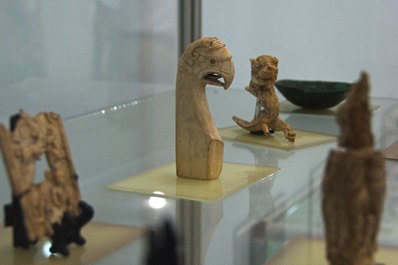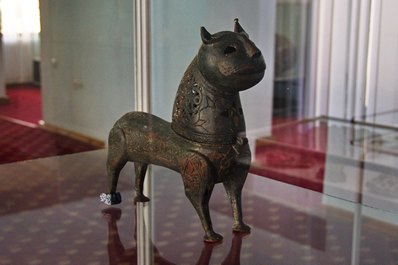National Museum of Antiquities, Dushanbe
The best collection of Tajikistan archaeology
Tajikistan is a country, where Zoroastrian, Buddhist, Hellenistic, Islamic and unique Pamir cultures had been developing for thousands of years. Numerous archaeological and natural findings gathered in the Museum of Antiquities of Tajikistan in Dushanbe are the evidence of this abundance of cultures on the Tajik land.
Museum of Antiquities of Tajikistan began its history in 1934 when it was founded on the basis of archaeological findings presented at the Exhibition of National Economy Achievements. The exposition was represented by the Tajik branch of Academy of Sciences of USSR and then there were already 530 exhibits.
During the 20th century, new findings had been expanding the museum collection, until it reached the point when exhibits were divided into categories: ceramics, utensils, weapons, labor tools, sculpture, jewelry, numismatics, etc. Moreover, all items were kept in small rooms and basements of the Institute of History at the Academy of Sciences of Tajik SSR. Thus, access to this resource was open mainly for students and scholars.
After the independence, subsidies were given to establish a real museum. On 4 April 1996, it was formed as “The Museum of Antiquities of Tajikistan” and in 2001 received a separate building, where a full collection of archaeological, ethnographic and natural researches held during the 20th century.
Today Museum of Antiquities of Tajikistan is located in the 2-storey building in the central part of Dushanbe. Its exposition is divided into periods starting with 4th millennium B.C. and ending with the beginning of the 20th century. The collection includes findings from the entire territory of Tajikistan, large archaeological excavations of Sarazm, Ajina-Tepe, Tahti-Sangin and such cities as Khujand, Panjakent, Kurgan-Tyube, Istaravshan, Kulyab and others.
The most valuable and popular exhibit in the Museum of Antiquities of Tajikistan is Buddha in Nirvana. The statue of Buddha lying on his right side was found in the 1960’s during the excavations in the town of Ajina-Tepe (surroundings of Kurgan-Tyube). The length of the sculpture is almost 13 meters, and weight is over 5,5 tonnes. The main exhibit in the museum is one of the largest monuments of Buddha in the whole world.
Museum of Antiquities of Tajikistan is one of the most frequently visited museums in Dushanbe, and real connoisseurs of ancient culture will definitely find it interesting.



















